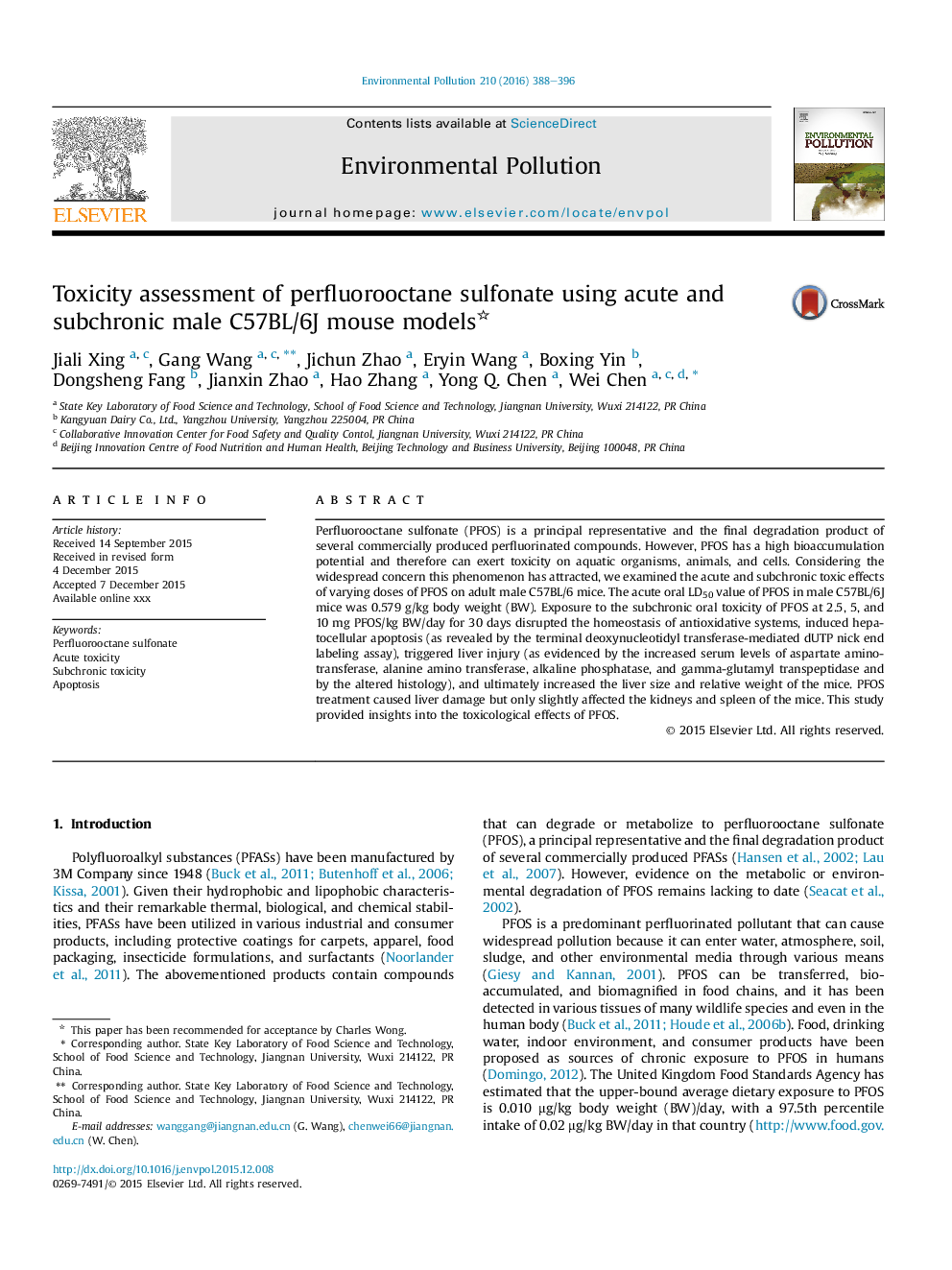| Article ID | Journal | Published Year | Pages | File Type |
|---|---|---|---|---|
| 6315171 | Environmental Pollution | 2016 | 9 Pages |
Abstract
Perfluorooctane sulfonate (PFOS) is a principal representative and the final degradation product of several commercially produced perfluorinated compounds. However, PFOS has a high bioaccumulation potential and therefore can exert toxicity on aquatic organisms, animals, and cells. Considering the widespread concern this phenomenon has attracted, we examined the acute and subchronic toxic effects of varying doses of PFOS on adult male C57BL/6 mice. The acute oral LD50 value of PFOS in male C57BL/6J mice was 0.579Â g/kg body weight (BW). Exposure to the subchronic oral toxicity of PFOS at 2.5, 5, and 10Â mg PFOS/kg BW/day for 30 days disrupted the homeostasis of antioxidative systems, induced hepatocellular apoptosis (as revealed by the terminal deoxynucleotidyl transferase-mediated dUTP nick end labeling assay), triggered liver injury (as evidenced by the increased serum levels of aspartate aminotransferase, alanine amino transferase, alkaline phosphatase, and gamma-glutamyl transpeptidase and by the altered histology), and ultimately increased the liver size and relative weight of the mice. PFOS treatment caused liver damage but only slightly affected the kidneys and spleen of the mice. This study provided insights into the toxicological effects of PFOS.
Related Topics
Life Sciences
Environmental Science
Environmental Chemistry
Authors
Jiali Xing, Gang Wang, Jichun Zhao, Eryin Wang, Boxing Yin, Dongsheng Fang, Jianxin Zhao, Hao Zhang, Yong Q. Chen, Wei Chen,
